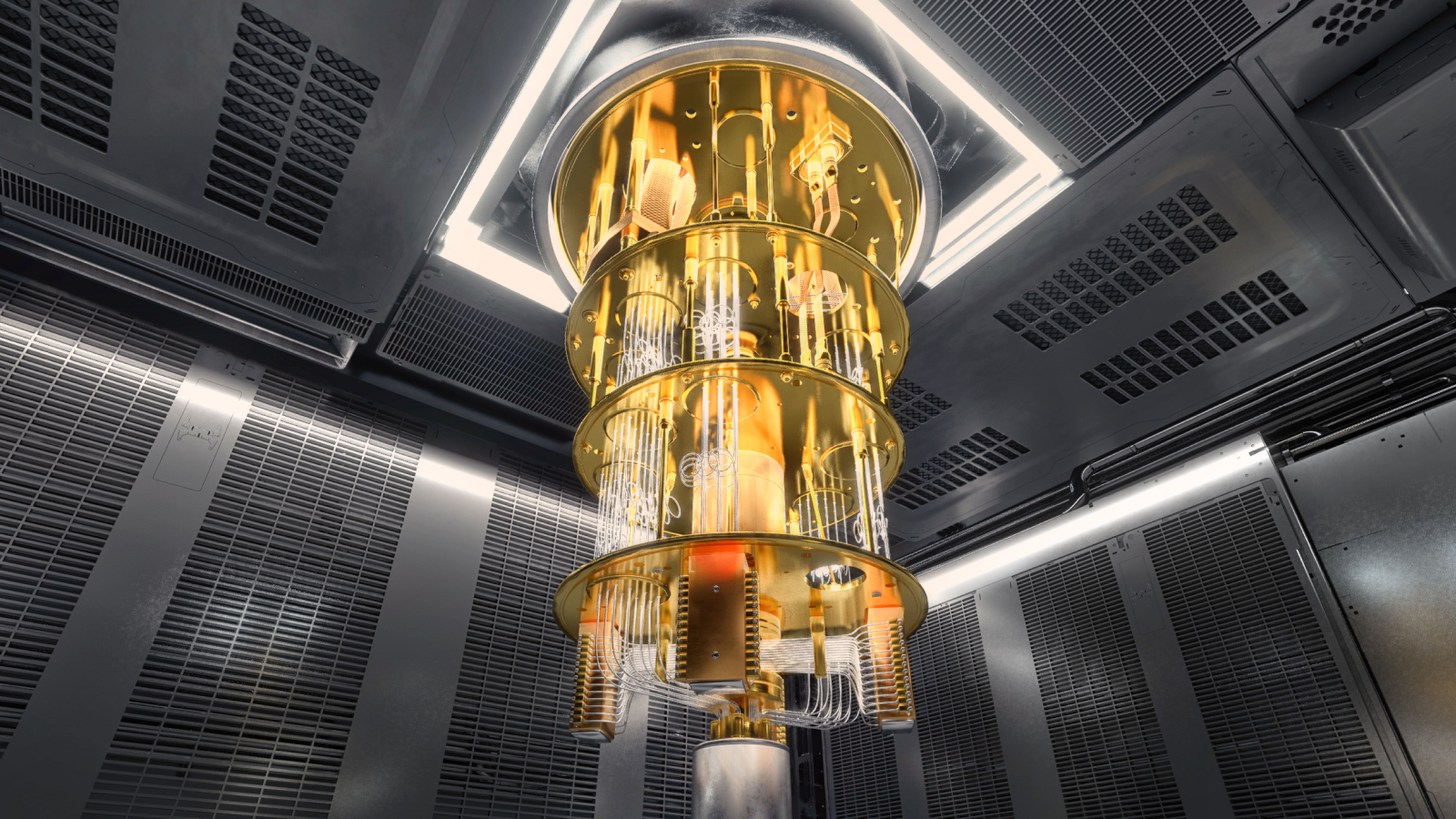
A new superconductor material could greatly improve the reliability of quantum computers, scientists say.
The electrical resistance of materials typically decreases as they are cooled. But some materials, called superconductors, maintain a gradually declining electrical resistance until they are cooled to their critical cut-off temperature, at which point their resistance becomes zero. Some types of superconductors, such as topological superconductors, can be used to transmit quantum data.
In a research paper published Aug. 23 in Science Advances, researchers at the University of California, Riverside, combined trigonal tellurium — a non-magnetic material and a type of chiral material (made of molecules that lack mirror-image symmetry) — with a thin film of gold.
They observed that the quantum states at the interface contained well-defined polarization (the quantum state of a subatomic molecule). This could allow the excitations of electrons to be potentially used as quantum bits (qubits) in a quantum computer.
The surface of the gold film became superconducting through the "proximity effect." This effect can occur when a non-superconducting material is placed near a superconductor, which suppresses the critical temperature of the superconductor. Being a chiral material, which cannot mirror its molecular properties, trigonal tellurium's quantum properties cannot be superimposed on its physical mirror image.
"By creating a very clean interface between the chiral material and gold, we developed a two-dimensional interface superconductor," said lead author of the study, Peng Wei, an associate professor of physics and astronomy at the University of California, Riverside, in a statement. "The interface superconductor is unique as it lives in an environment where the energy of the spin is six times more enhanced than those in conventional superconductors."
Related: 'Unbreakable' quantum communication closer to reality thanks to new, exceptionally bright photons
The interface superconductor underwent a transition under a magnetic field and became more robust, the scientists said in the paper This suggests it has transformed into a "triplet superconductor." — a type of superconductor that is more resistant to magnetic fields than conventional superconductors.
They conducted the research in conjunction with the National Institute of Standards and Technology. In earlier work, they demonstrated that thin films of gold and niobium naturally suppress decoherence — the loss of quantum properties due to external environmental interference.
Given its robust quantum qualities and its ability to suppress decoherence, this new superconducting material promises to be ideal for use in quantum computers, the scientists said. Minimizing decoherence within the system is a key challenge, which necessitates extreme measures to isolate the quantum computer from external influences, such as shifts in temperature or electromagnetic interference, as well as the use of error-correcting algorithms to ensure calculations remain accurate.
The superconducting material was an order of magnitude thinner than those used in today’s quantum computers, which may prove useful for producing low-loss microwave resonator components in the future. Microwave resonators, which are an essential part of quantum computers, store and control electrons at microwave frequencies.
High-quality, low-loss microwave resonators are needed to enable more reliable quantum computers, and the scientists said that this new superconducting material is a promising candidate.
Unfortunately, the paper’s authors made no reference to the critical cut-off temperature of the material. If they could avoid decoherence at a warmer temperature, it could be a ground-breaking achievement in quantum computing research. The material properties the researchers demonstrated, however, offer encouragement in building the components needed to suppress decoherence. But how practical the material will be requires further exploration.







